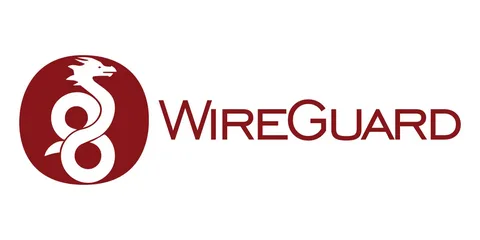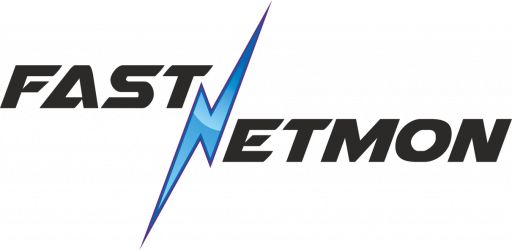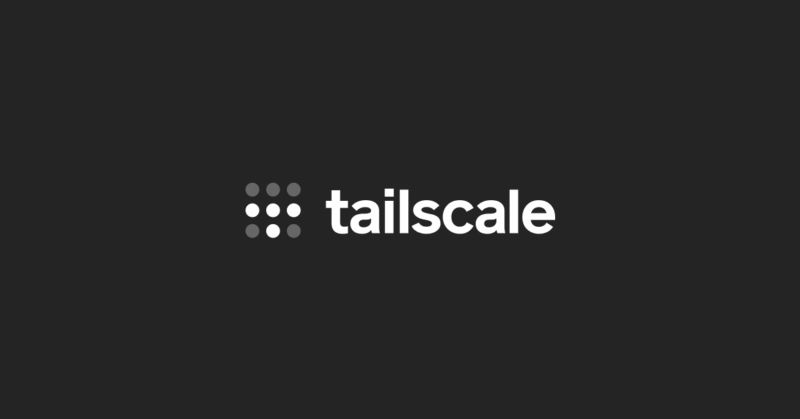In the ever-evolving realm of secure networking, the quest for the ideal alternative to Tailscale has become paramount. Understanding the features, limitations, and unique aspects of Tailscale is crucial before delving into the myriad of alternatives available. In this comprehensive guide, we explore the landscape of Tailscale alternatives, shedding light on their functionalities, use cases, and what sets them apart.
Features And Limitation Of Tailscale

In assessing the Features and Limitations of Tailscale, it is evident that its seamless connectivity, robust encryption, and intuitive user interface contribute to its appeal, while considerations such as scalability challenges and dependency on continuous internet connectivity underscore the need for users to weigh both the strengths and limitations when choosing a secure networking solution.
Features of Tailscale
- Seamless Connectivity: Tailscale provides a seamless and hassle-free connectivity experience, allowing devices to communicate securely over the network.
- Robust Encryption: With a focus on security, Tailscale employs robust encryption protocols to ensure the confidentiality and integrity of data during transmission.
- Intuitive User Interface: Tailscale boasts an intuitive user interface, making it user-friendly and accessible even for those without extensive networking expertise.
- Centralized Control Plane: The use of a centralized control plane streamlines the management of connected devices, offering a centralized point of control for network administrators.
- Efficiency: Tailscale is known for its efficiency, delivering a fast and responsive networking solution that meets the demands of modern connectivity.
Limitations of Tailscale
- Scalability Challenges: Tailscale’s reliance on a centralized control plane may pose scalability challenges in larger network environments, where the sheer number of devices can impact performance.
- Specific Feature Set: While Tailscale excels in simplicity, its specific feature set may not cater to all use cases. Users with specialized requirements may find themselves exploring tailscale alternative with more tailored functionalities.
- Dependency on Tailscale Infrastructure: Tailscale’s operation depends on its infrastructure. Any disruptions or issues with Tailscale’s infrastructure may impact the overall connectivity and functionality of the network.
- Limited Configuration Options: Advanced users seeking extensive configuration options may find Tailscale limiting in terms of customization compared to some other VPN solutions.
- Continuous Internet Connectivity Requirement: Tailscale relies on continuous internet connectivity for optimal functionality. In scenarios where internet connectivity is intermittent or restricted, Tailscale may face challenges in maintaining consistent connections.
What Sets Tailscale Apart?
Tailscale’s distinctive features lie in its simplicity and efficiency. The question arises – why consider alternatives? The need for tailscale alternative stems from diverse use cases, ranging from scalability concerns to specific feature requirements. Let’s delve into the world of Tailscale alternatives and explore the landscape of secure networking solutions.
Need Of Tailscale Alternatives

Recognizing the imperative Need Of Tailscale Alternatives, users delve into the nuanced aspects of scalability concerns, feature customization requirements, platform compatibility needs, and diverse use cases with specialized requirements, driving the exploration for secure networking solutions that offer a tailored approach to address these varied demands.
1. Scalability Concerns:
In the realm of secure networking, scalability is a pivotal factor influencing the choice of a suitable solution. Tailscale, while excelling in simplicity, encounters challenges in scalability, particularly in expansive network environments. As organizations grow and the number of connected devices proliferates, Tailscale’s reliance on a centralized control plane may lead to performance bottlenecks. In scenarios where seamless connectivity for a large number of devices is paramount, users may find themselves grappling with the need for tailscale alternative that can efficiently scale without compromising performance. This inherent limitation prompts users to explore secure networking solutions that offer robust scalability without sacrificing the core principles of simplicity and security.
2. Feature Customization Requirements:
While Tailscale is lauded for its simplicity and user-friendly interface, certain users and organizations may demand a more tailored approach to networking, necessitating advanced feature sets and extensive customization options. Use cases abound where the need for specific functionalities or intricate configurations surpasses what Tailscale provides out of the box. Users seeking fine-grained control over their secure networking parameters or those with specialized security requirements may find Tailscale’s feature set limiting. Consequently, the quest for tailscale alternative becomes imperative, driven by the need for solutions that offer a higher degree of customization to align with diverse and intricate networking demands.
3. Platform Compatibility Needs:
The modern IT landscape is diverse, with organizations relying on a myriad of platforms and operating systems. Tailscale, while compatible with various platforms, may not encompass the entire spectrum of operating systems utilized across industries. As users operate on platforms beyond the standard scope of Tailscale support, the need for tailscale alternative with broader platform compatibility becomes apparent. A secure networking solution should seamlessly integrate with the array of platforms employed within an organization to ensure consistent and reliable connectivity. The exploration of tailscale alternative thus becomes a strategic move to address the demand for comprehensive platform compatibility in the ever-evolving world of IT infrastructure.
4. Diverse Use Cases and Specialized Requirements:
In the dynamic landscape of secure networking, the one-size-fits-all approach may not suffice. Industries and applications exhibit unique networking demands, and Tailscale, designed for simplicity, might not encompass the specialized requirements of diverse use cases. From healthcare to finance, each sector may necessitate specific security measures and tailored networking solutions. As users navigate through scenarios where Tailscale’s features fall short in meeting industry-specific regulations or application-specific demands, the pursuit of tailscale alternative tailored to these diverse use cases becomes essential. Recognizing the need for specialized solutions, users embark on the search for alternatives that align with their unique networking requirements, ensuring a secure and customized approach to connectivity.
Commonly Used Tailscale Alternatives For Secure Networking

In the intricate world of secure networking, the pursuit of alternatives to Tailscale has given rise to a diverse and dynamic set of solutions. These alternatives not only cater to specific use cases but also offer unique features that set them apart in the realm of secure connectivity.
1. WireGuard: A Swift and Modern Alternative
WireGuard represents a paradigm shift in VPN protocols, emphasizing speed, simplicity, and modernity. Its streamlined design facilitates not only seamless connections between devices but also an efficient and secure networking experience. Users seeking a swift and contemporary alternative find WireGuard to be a compelling choice, delivering robust performance without sacrificing security.
2. ZeroTier: Paving the Way for Peer-to-Peer Connections
ZeroTier emerges as a pioneer in the realm of peer-to-peer VPN solutions, introducing a decentralized approach to networking. By establishing direct connections between devices, ZeroTier provides a level of flexibility and autonomy that resonates with users looking for a distributed network architecture. Its versatility positions it as a noteworthy choice, accommodating various networking scenarios with ease.
3. OpenVPN: Widely Adopted Open-Source Solution
OpenVPN remains a stalwart in the secure networking arena, celebrated for its versatility and open-source nature. Supporting both point-to-point and site-to-site connections, OpenVPN stands as a reliable alternative to Tailscale. Its robust community support ensures continuous improvement, adaptability, and a wide array of customizable features to meet evolving security requirements.
4. Hamachi: LogMeIn’s Virtual Private Network
Developed by LogMeIn, Hamachi brings forth a user-friendly and efficient virtual private network solution. Its simplicity in setup and management, coupled with a managed VPN service, adds an extra layer of convenience. Hamachi’s reliability and ease of use make it an attractive alternative for users seeking seamless and hassle-free connectivity solutions.
5. SoftEther VPN: Multi-Protocol Support for Flexibility
SoftEther VPN stands out by supporting multiple VPN protocols, including SSL VPN and L2TP/IPsec. Its emphasis on flexibility and adaptability makes it a versatile alternative, catering to a wide range of networking needs. Organizations benefit from the ability to choose protocols that align with their specific requirements, enhancing SoftEther VPN’s appeal in diverse IT environments.
6. Pritunl: Streamlined Open-Source VPN Server
Pritunl simplifies the setup of personal IPsec VPNs with its set of Ansible scripts, making it an open-source and manageable VPN server. Users appreciate the streamlined nature of Pritunl, combining simplicity with power. This alternative is an excellent choice for those seeking a user-friendly yet robust solution, as it provides a customizable approach to secure networking.
7. StrongSwan: IPsec-Based Security for Linux
StrongSwan caters specifically to Linux users, offering an IPsec-based VPN solution with a strong focus on security. In Linux environments, where robust security measures are crucial, StrongSwan provides a trustworthy alternative to Tailscale, ensuring secure communication over the network.
8. Algo VPN: Ansible Scripts for Effortless Setup
Algo VPN distinguishes itself by employing Ansible scripts, streamlining the setup of personal IPsec VPNs. Automation and ease of use are at the forefront of Algo VPN’s design, making it an attractive alternative for users seeking a hassle-free yet secure networking solution. Its straightforward approach resonates with those who prioritize simplicity and efficiency.
9. OpenConnect: VPN Client and Server for Versatility
OpenConnect stands as an open-source VPN client and server supporting the Cisco AnyConnect protocol. Its versatility and compatibility with various platforms make OpenConnect a compelling alternative for users seeking secure networking solutions across diverse environments. Whether on desktop or mobile, OpenConnect ensures consistent and secure connectivity, making it a versatile choice for organizations with varied IT infrastructures.
10. FastNetMon: Enhancing Security with DDoS Detection
While not a direct Tailscale alternative, FastNetMon contributes a unique layer of security to the secure networking landscape. With a primary focus on DDoS detection, it complements other VPN solutions, providing an additional safeguard against malicious activities on the network. FastNetMon’s role in enhancing overall network security positions it as a valuable adjunct to traditional VPN solutions.
Factors to Consider When Choosing the Perfect Tailscale Alternative

Navigating the myriad of secure networking alternatives to Tailscale requires a comprehensive understanding of several key factors. Your choice of a Tailscale alternative should align seamlessly with your organization’s or personal networking needs. Here, we delve into the intricacies of five critical considerations to guide you towards selecting the perfect solution:
1. Scalability
The scalability of a networking solution is paramount, especially in environments where growth is anticipated. Consider the future trajectory of your network – how many devices will need to connect, and how seamlessly can the alternative accommodate this growth? A perfect Tailscale alternative should offer scalability without compromising performance. This ensures that as your network expands, the chosen solution can effortlessly adapt, providing a seamless and responsive experience for all connected devices.
2. Feature Set and Customization
The ideal Tailscale alternative should not only meet your current networking needs but also be adaptable to your unique use cases. Assess the feature set of each alternative and evaluate whether it aligns with your organization’s or personal requirements. Furthermore, consider the level of customization the alternative provides. A perfect solution offers a comprehensive set of features and allows for fine-tuning to cater specifically to your networking demands. Flexibility in customization ensures that the solution can evolve alongside your organization’s changing needs.
3. Platform Compatibility
In the diverse landscape of IT infrastructures, platform compatibility is a key factor to consider when choosing a Tailscale alternative. Ensure that the alternative seamlessly integrates with the operating systems and devices utilized within your organization. Whether you operate on Windows, macOS, Linux, or mobile platforms, the perfect alternative should offer broad compatibility. This guarantees consistent and reliable connectivity across all devices, fostering a unified networking experience without compatibility hiccups.
4. Security Protocols and Compliance
Security is a paramount consideration in the selection of a secure networking alternative. Evaluate the security protocols employed by each alternative, ensuring they align with your organization’s security standards. Additionally, consider whether the alternative complies with industry-specific regulations and standards, particularly if your network handles sensitive data. A perfect Tailscale alternative prioritizes robust encryption, advanced authentication mechanisms, and compliance with security best practices. This ensures that your network remains resilient against potential threats and meets the necessary regulatory requirements.
5. Ease of Use and Management
The ease of use and management of a networking solution are crucial for successful integration into your workflow. A perfect Tailscale alternative should boast an intuitive user interface and streamlined setup processes. Consider the manageability features, including centralized control, monitoring capabilities, and reporting functionalities. The simplicity of day-to-day operations ensures a smoother adoption process for administrators and end-users alike. An alternative that minimizes the learning curve and enhances overall user experience contributes significantly to the success of the networking solution within your organization.
Conclusion
Navigating the landscape of Tailscale alternatives requires a nuanced understanding of each solution’s features, limitations, and use cases. Whether you prioritize simplicity, scalability, or platform compatibility, the diverse array of alternatives discussed above ensures that you can find the perfect fit for your secure networking needs. As you embark on this journey, consider your specific requirements and let the rich tapestry of alternatives guide you toward an optimized and secure networking solution.









